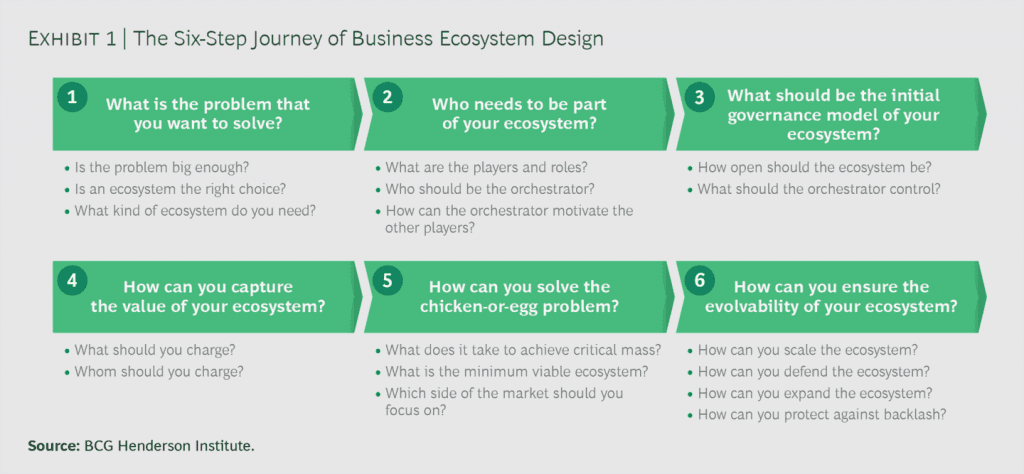If designing a traditional business model is like planning and building a house, designing an ecosystem is more like developing a whole residential district: more complex, more players to coordinate, more layers of interaction and unintended emergent outcomes.
What makes ecosystem design distinctive is that it requires a true system perspective. It is not sufficient to design the value creation and delivery model; the design must also explicitly consider value distribution among ecosystem members. This is further complicated by the limited hierarchical control in an ecosystem and the need to convince partners to participate, which poses specific governance challenges. And ecosystems exhibit strategic challenges not found in other governance models, such as how to solve the chicken-or-egg problem of creating a critical mass of partners and customers during launch and how to build a scalable and defendable model.
Moreover, business ecosystems, similar to residential districts, cannot be entirely planned and designed—they also emerge. This adaptability is actually one of their major strengths. However, there are some key design choices you need to get right in order to increase the odds of success. These design choices are not independent; they must be consistent with one another and offer a coherent overall configuration. Based on an analysis of more than 100 successful and failed ecosystems across sectors and geographic markets, we find that the ecosystem design challenge can be addressed by working through six sequential questions (see Exhibit 1):
- What is the problem that you want to solve?
- Who needs to be part of your ecosystem?
- What should be the initial governance model of your ecosystem?
- How can you capture the value of your ecosystem?
- How can you solve the chicken-or-egg problem during launch?
- How can you ensure evolvability and the long-term viability of your ecosystem?



